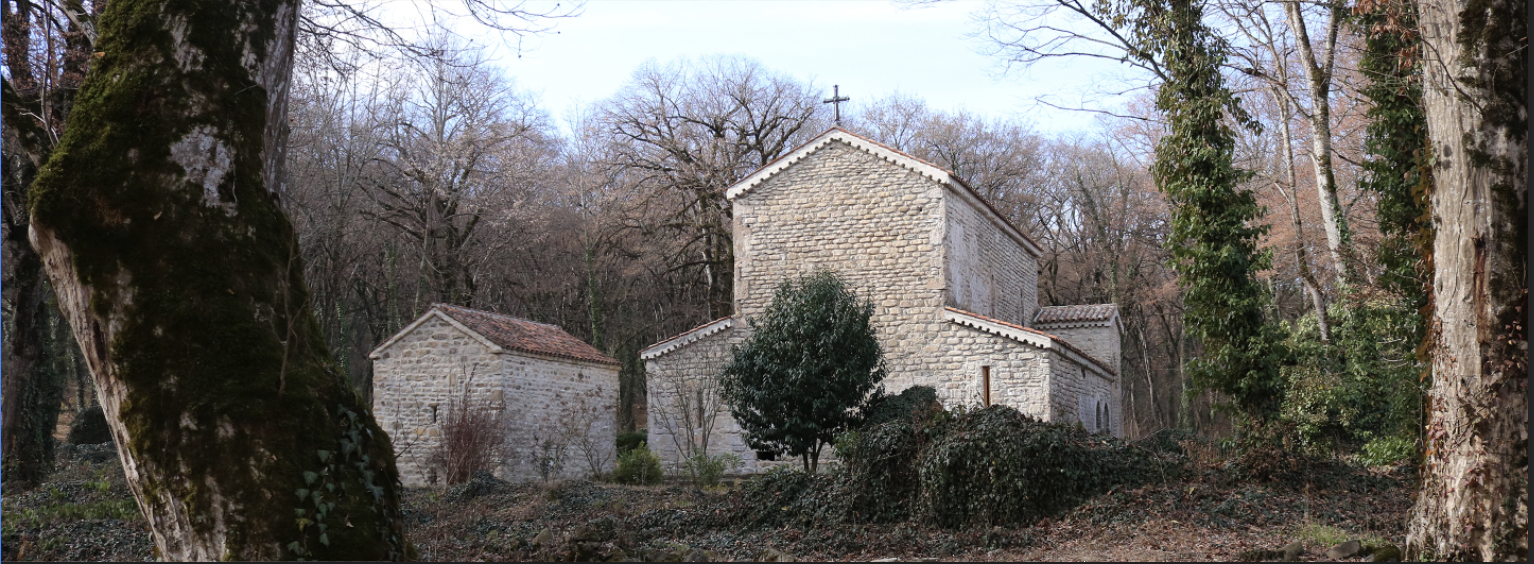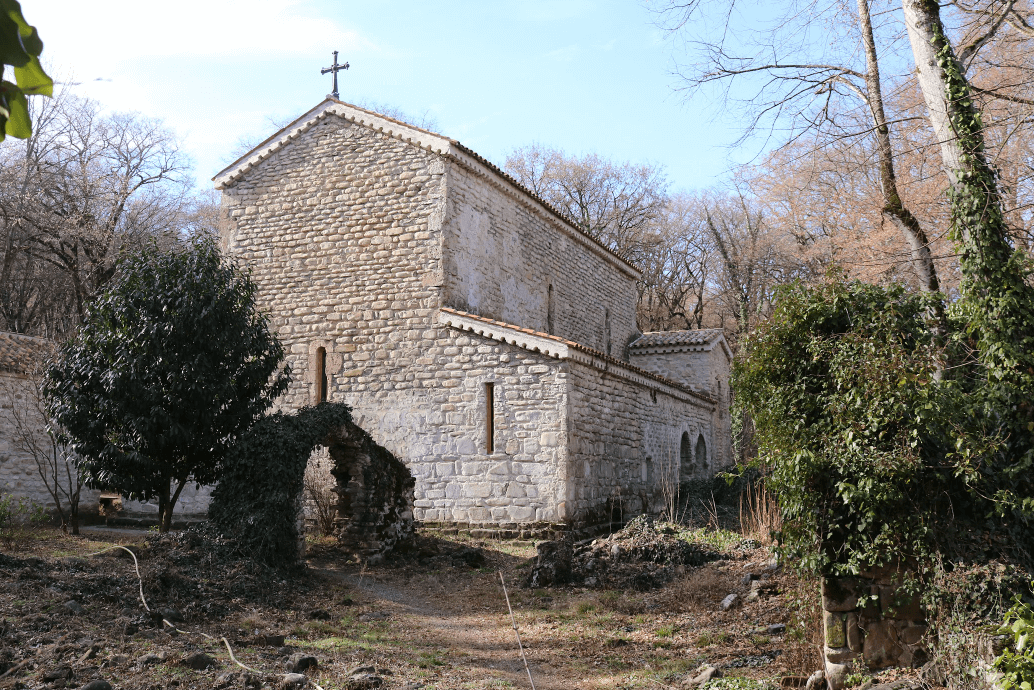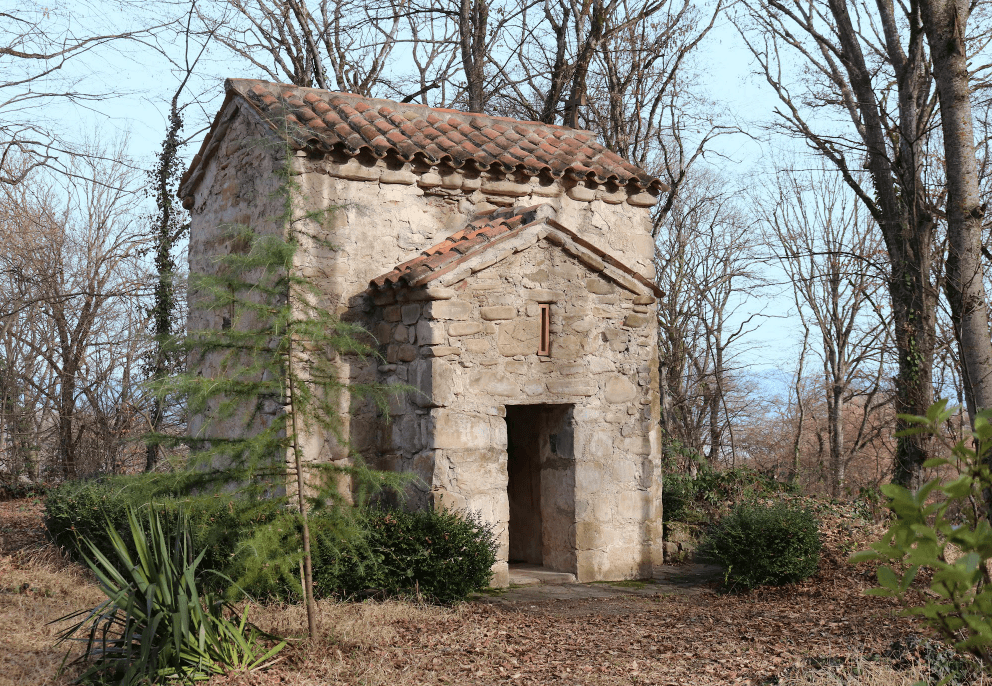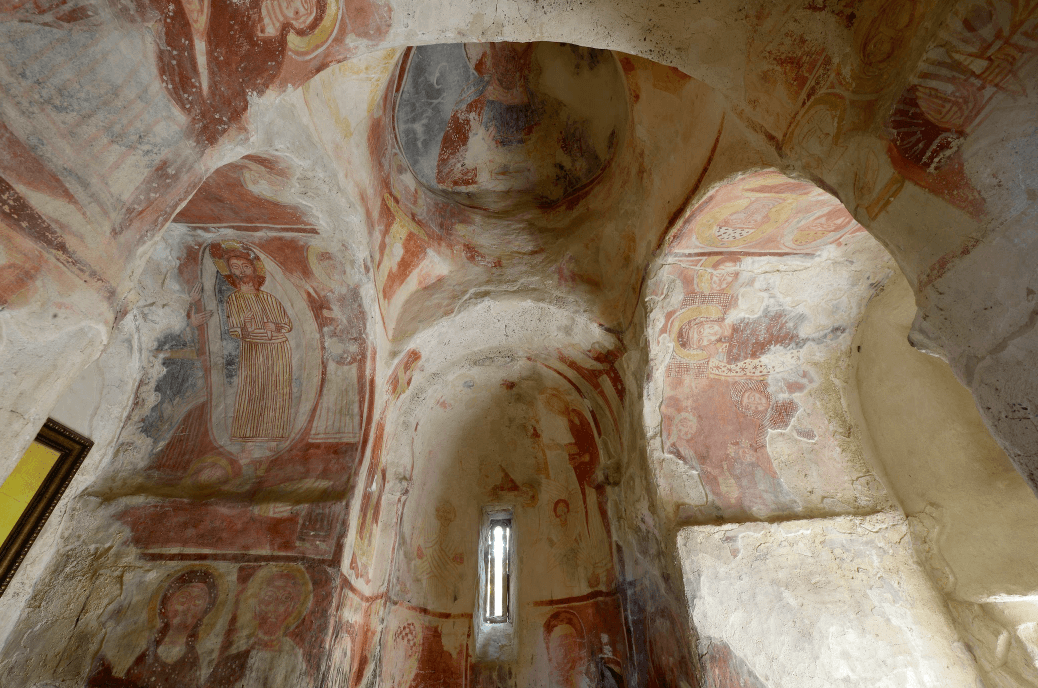
Feel free to add tags, names, dates or anything you are looking for


Zegani Monastery, nestled in a picturesque, dense forest near the village of Zegani in the Gurjaani Municipality of Kakheti, was established in the late sixth or early seventh century. Among its oldest buildings are the main church, dedicated to the Mother of God, and the Chapel of St Marina.

The main church of Zegani Monastery follows the plan known as the triple-church basilica. It combines an inner single-nave structure with an outer basilican form. Instead of aisles, it features side rooms to the south and north, which are separated from the nave by walls. To the west, they are connected by a corridor, forming an unbroken U-shaped ambulatory around the nave. To the east, there are separate rectangular rooms at both ends of the ambulatory.
The church has three entrances, with the western and northern ones being double-arched, and the southern one triple-arched. An upper gallery, arranged above the western part of the ambulatory, provided a special place for senior clergy or local lords.

Church of the Mother of God, viewed from the north-west
The Church of the Mother of God is entirely built of cobblestone. Specially selected, level cobbles form even rows on the façades, and feature no decorative elements. On the eastern façade, two partially walled-up doors once led to burial vaults beneath the altar.

Western entrance
The Chapel of St Marina, located about 50 meters east of the church, is a small structure built of cobblestone and large, roughly hewn stones. The nave of the chapel is intersected by a transept, forming a cross-shaped plan with four equal-sized arms. From the outside, the nave is higher than the transept. A tiny dome, erected above the crossing, is invisible from the exterior, as it is hidden under the gable roof of the nave.

Chapel of St Marina, viewed from the south-west
The interior of the chapel was painted in the sixteenth century. The style of the murals, which completely cover the walls, vaults, and dome, reveals the hand of an unsophisticated local painter. The Deesis is depicted in the apse of the sanctuary, and Christ Pantocrator is represented in the dome. Scenes of the Nativity, Baptism, Transfiguration, Crucifixion, and Ascension of Jesus are depicted on the vaults, while the walls are adorned with images of archangels, saints, and martyrs. The overall color palette of the painting is dominated by red ochre.

Interior view of the Chapel of St Marina
A single-nave chapel, located near the southeastern corner of the church, was built in the sixteenth century. To the west and north are the ruins of a refectory, a wine cellar, and monks’ cells. Abandoned in the nineteenth century, the monastery became active again in 2008. From 2020 to 2023, the sanctuary of the Church of the Mother of God was decorated with mosaic painting. New temples were made in both churches.